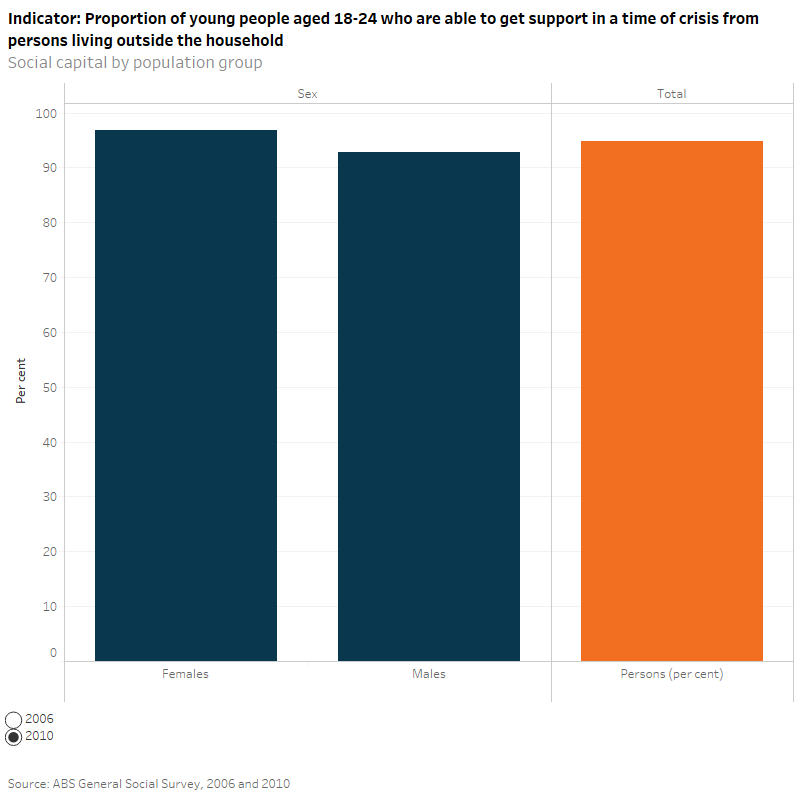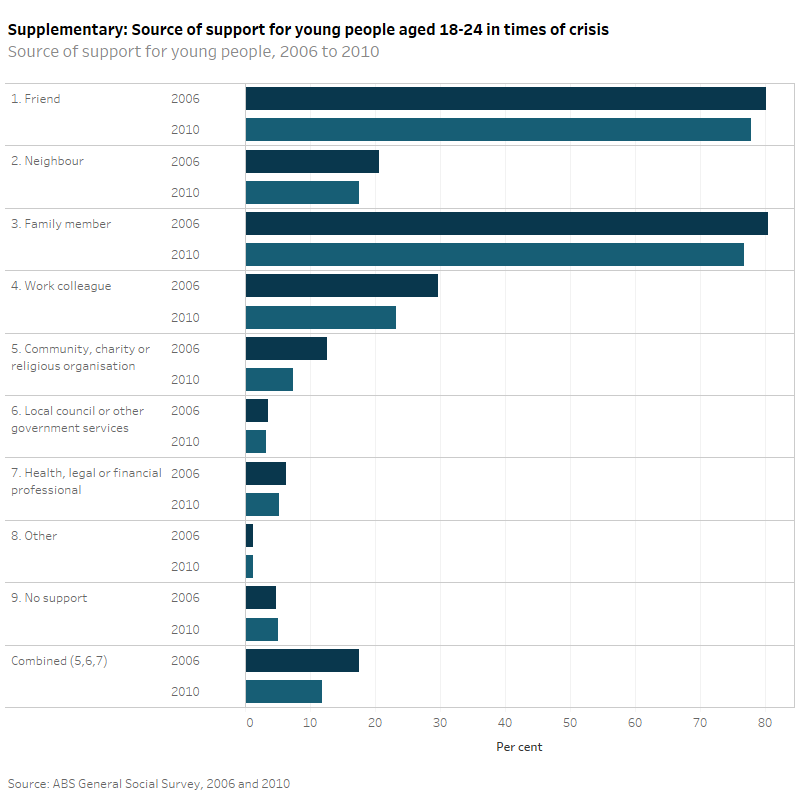Social capital
Why is the reporting of rates on social capital important?
Social capital is an important aspect of the social context in which young people grow and develop. It is a multi-dimensional concept that can be understood as networks of social relationships which enable people to come together to collectively share experiences or resolve issues or problems, and where trust and mutual benefit are necessary components. These relationships can exist within a family or household, but most often extend to friends and other sections of the community (Whiting & Harper 2003)
Strong connections between individuals promote a sense of belonging and provide access to support. This can be represented by the degree to which young people feel they can get assistance from neighbours, participate in community activities and become involved in local events or groups. Strong family relationships and supportive neighbourhoods protect young people against adverse effects of socioeconomic disadvantage, leading to improved health in economically poor communities (Zwi & Henry 2005).
Social capital is a key social determinant of health, and can affect physical health in relation to stress and personal control over one’s life circumstances (Wilkinson & Marmot 2003; AIHW 2012).
Do rates vary across population groups?
In 2010, nearly all young people (95%) were able to get support in times of crisis from people living outside their household. There were similar proportions of males (93%) and females (97%), with no significant difference found between sexes. Additionally, the most commonly reported sources of support in 2010 were friends (78%), family members (77%) and work colleagues (23%).
Has there been a change over time?
The proportion of young people able to get support in times of crisis has remained stable from 2006 to 2010 (around 95%). Over this time there were no significant changes in the proportions of males (94% to 93%) or females (96% to 97%) who were able to get support in times of crisis.
From 2006 to 2010, there were no significant changes among most sources of support for young people in times crisis. The only differences over this period were decreases in the proportion of young people receiving support from work colleagues (30% to 23%) and community, charity or religious organisations (13% to 7.4%).


*This report is based on survey data; relative standard errors and 95% confidence intervals are provided in the Source data tables: NYIF indicators. Some estimates have relative standard errors of 25% to 50% and should be used with caution. Significance testing was undertaken on values cited in the text; unless otherwise stated, differences were found to be statistically significant.
Due to its multidimensional nature, social capital is difficult to summarise in one measure. Measures of social capital used in this report are limited to social support networks, due to lack of available data. Support networks are a key aspect of social capital and as such can be used as a proxy measure for social capital.
ABS General Social Survey 2006 and 2010
Data quality statement: ABS General Social Survey
AIHW (Australian Institute of Health and Welfare) 2012. Social and emotional wellbeing: development of a children's headline indicator. Cat. no. PHE 158. Canberra: AIHW.
Whiting E, and Harper R 2003. Young people and social capital. Office for National Statistics UK. Viewed 11 May 2015
Wilkinson RG & Marmot M (eds.) 2003. Social determinants of health: the solid facts. Geneva: WHO.
Zwi KJ & Henry RL 2005. Children in Australian society. Medical Journal of Australia 183(3):154–62.


